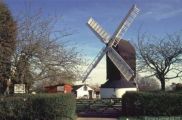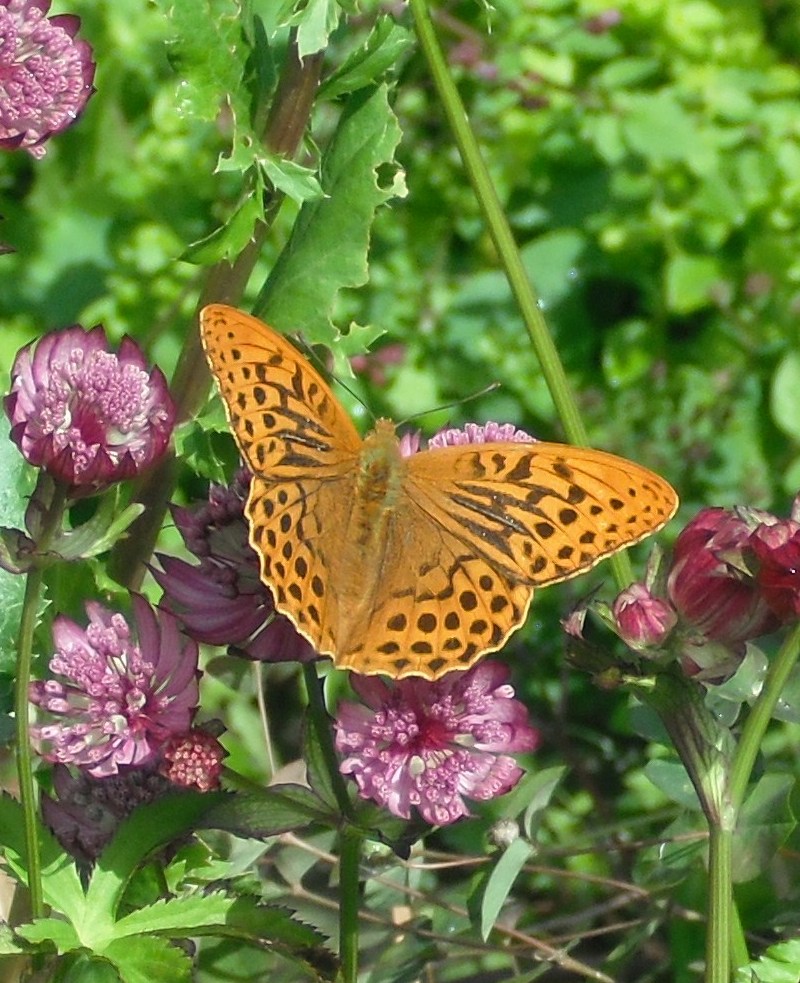
OUTWOOD IN SURREY "The Village with the Mill"
August - September 2012
Rain, rain go away
Come again another day
We want to go outside to play
Come again another day
This children's rhyme just about sums up the sentiment we all share regarding the dreadful weather we've had so far this summer. There was barely a day in June without rainfall often accompanied by high winds, hailstones and bouts of thunder and lightning. This bad weather, together with lower than average temperatures, persisted through to the third week of July. However, the Met Office forecast an improvement for the fourth week on the basis that the jet stream, which caused the bad weather, was due to move further north allowing, at least, the south of the country and the Olympic competitors and international visitors a chance to experience some better summer conditions.
 As mentioned last month the cool, wet weather has resulted in a huge reduction in the numbers of butterflies although it is hoped that given some warmer, sunnier weather populations will increase. One interesting sighting was made by Caroline Last who photographed a Silver Washed Fritillary (Argynnis paphia) on a red astrantia in her garden on 15 July. This butterfly which is the largest of the fritillaries (3 - 5 cms wingspan) found in the UK, mainly frequents open woodland and takes its name from the beautiful silver markings on the underside of the wings. This was almost certainly the same species reported by Gerald Sharpe who saw a pair in Bransland Wood a few days earlier. The colouring of the male is deep orange with dark brown markings and white along the scalloped rear edges of the wings; the females are much lighter in colour. They feed mainly on the nectar of the Common Dog Violet, Bramble and Ragwort. An unusual feature of this species is that the males have four dark stripes on each of the forewings, known as "sex brands" which contain specialised scent scales (androconial scales) which are scattered over the females during their courtship display. Eggs are laid August - September, larvae pupate May - June and the adults emerge in late June, July and August.
As mentioned last month the cool, wet weather has resulted in a huge reduction in the numbers of butterflies although it is hoped that given some warmer, sunnier weather populations will increase. One interesting sighting was made by Caroline Last who photographed a Silver Washed Fritillary (Argynnis paphia) on a red astrantia in her garden on 15 July. This butterfly which is the largest of the fritillaries (3 - 5 cms wingspan) found in the UK, mainly frequents open woodland and takes its name from the beautiful silver markings on the underside of the wings. This was almost certainly the same species reported by Gerald Sharpe who saw a pair in Bransland Wood a few days earlier. The colouring of the male is deep orange with dark brown markings and white along the scalloped rear edges of the wings; the females are much lighter in colour. They feed mainly on the nectar of the Common Dog Violet, Bramble and Ragwort. An unusual feature of this species is that the males have four dark stripes on each of the forewings, known as "sex brands" which contain specialised scent scales (androconial scales) which are scattered over the females during their courtship display. Eggs are laid August - September, larvae pupate May - June and the adults emerge in late June, July and August.
Other wildlife sightings have included one from Ursula Hickman who said that on the 23 June her roof provided a perch for a very large flock of seagulls - gulls have been seen more regularly this year due to the high winds along the coast. Yet another report was from John Crittall who saw an elusive stoat in the open woodland at the top of Millers Lane. Meanwhile a male bullfinch has been seen in the garden for the first time in a few years and around the bird-table the resident cock pheasant continues to make a daily visit to feed on the grain and seeds dropped by the other birds. Other regulars include family groups of four Crows and four Magpies which flap their wings constantly as they try to grasp the small perches and three Jays which are more constrained in their feeding habits. A few weeks back I was sitting quietly one afternoon when I was amazed to see a male fox walk slowly, almost nonchalantly, across the terrace just two metres away, and then jump onto a low wall and just melt thorough the hedge. Unusually the colour of the coat was very dark brown rather than the more normal lighter, reddish brown.
Mike Johnson